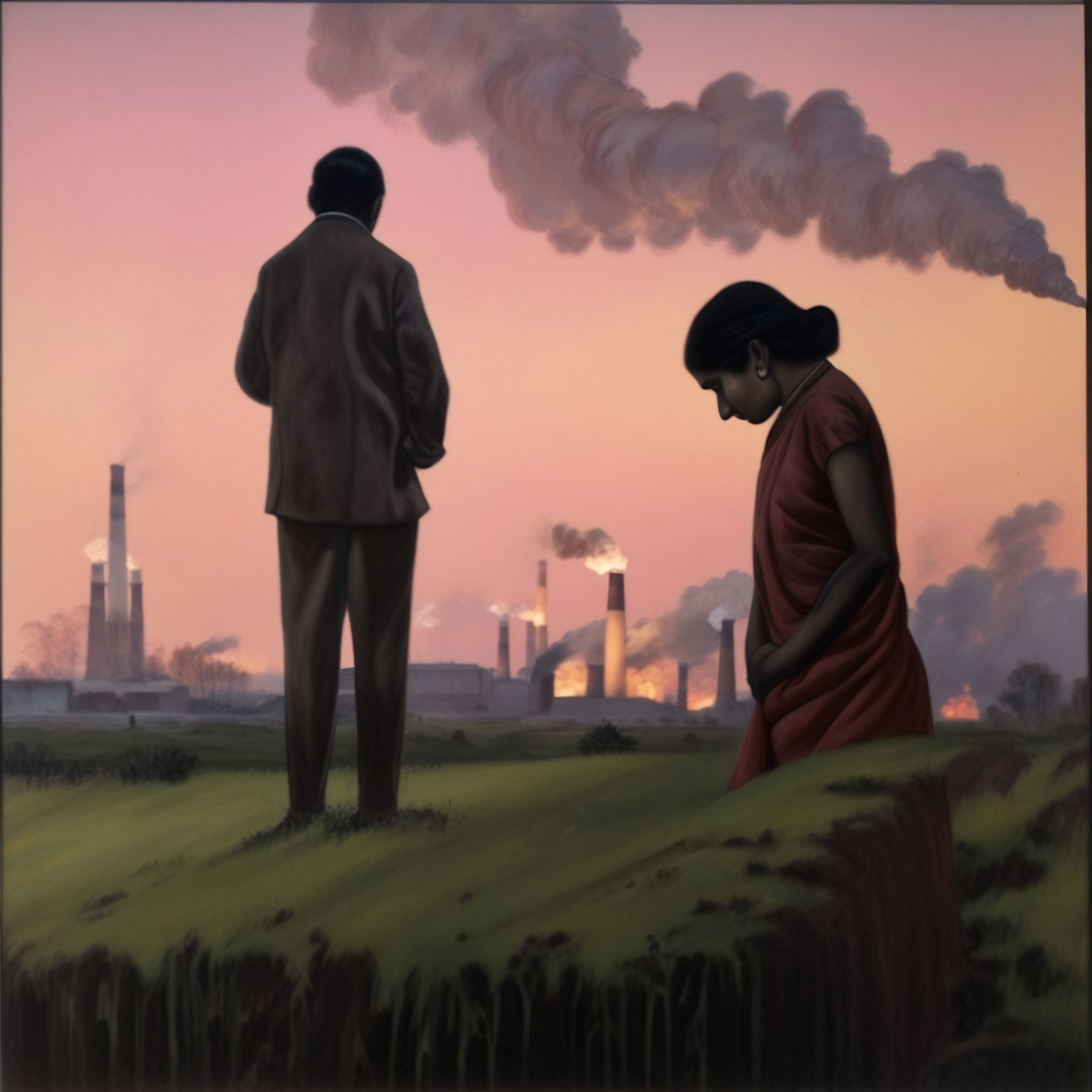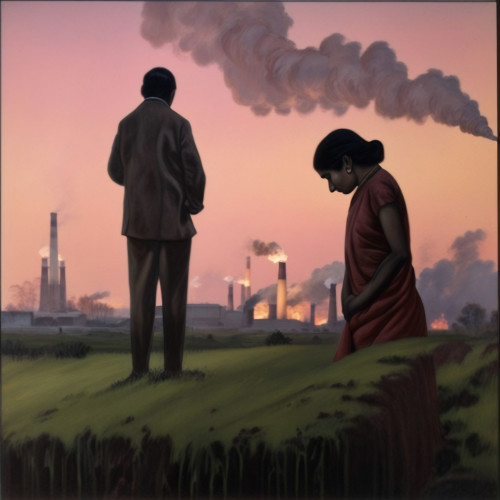Billy Dosanjh
Ekow Eshun in Conversation with Billy Dosanjh
Wolverhampton Art Gallery
Partner Reflection

Shadow of Industry: A Desi Night
Working with the UAL team and Wolverhampton Art Gallery has been eye-opening. The residency deepened my understanding of the histories that surround us, revealing biases embedded in our systems. It also highlighted the challenges museums and galleries face today in representing diverse narratives.
My choice to collaborate with the gallery stems from a deep connection to the region. I spent many Fridays in their basement archives, reflecting on their permanent collection, scrutinising how their label works, and considering the institution’s public persona. As time went on, I became engrossed in uncovering hidden histories—specifically, the stories of empire workers who migrated to the Black Country in the 1950s and 1960s. The gallery holds treasured 19th and 20th century landscape paintings of the area, including works by Edwin Butler Bayliss. What was missing in them?

New Life, Old Struggles
I also contemplated the Black Country’s role in the Industrial Revolution. The technological innovations from this region gave the British Empire a significant edge in global extraction practices. This led me to wonder: Is today’s tech innovation—with the computer chip as the modern foundry—set to repeat similar patterns? Will the digital “system,” due to inherent biases, marginalise certain cultures and realities as it absorbs information, overlooking what it doesn't “see”?

Shadow of Progress
To explore these questions, I collaborated with software engineers to build a database of images. We included scans from the gallery’s permanent collection—now in the public domain—and ethically sourced images from my archives of mid-20th-century empire workers. We meticulously tagged each image to train a machine learning model, which I leased. This model generated new visuals based on prompts from the residency and local anecdotes I've long wanted to see in image form. The resulting artworks are the product of careful experimentation while the technology we’ve used is timestamped as Summer 2024.

Into the Unknown
To infuse the pieces with a deeper sense of time, I worked with photopolymer intaglio printing techniques – very hands and a way of bringing carbon-based inks and steel plates into the mix. This blend of historical materials and modern technology bridges past and present, highlighting the recurring nature of innovation and its cultural impacts.

Mother Earth in the Black Country
Other creative outputs include a three-dimensional sculpture of a 19th century foundry producing computer chips that incorporates audio soundbites and inner lights as a standalone work. And artist film documenting my creative journey from personal reflections to broader political and planetary themes.

The project, titled “Endz of the Earth,” will initially be exhibited at Wolverhampton Art Gallery in Summer 2025. The extensive research and deep engagement with my cohort have taken an emotional toll I didn’t anticipate. Reexamining a world I thought I knew has been both challenging and rewarding.
Looking ahead, I plan to apply this approach to other historical periods where artistic depictions of European civility starkly contrast with the truths we now recognise. My goal is to interrogate these narratives and use new technologies to “gift” the system with stories and worlds that have largely been absent from mainstream discourse.
Partner Reflection
Wolverhampton Art Gallery
Leonie O’Dywer, Curator
Sanna Moore, Senior Curator
September 2024
Wolverhampton Art Gallery (WAG) was pleased to host Billy Dosanjh for the 20/20 residency. An artist with roots in the Black Country, Billy is passionate about unveiling untold stories reflecting the region’s industrial past. His initial research into the Gallery’s collection of industrial landscapes identified the lack of representation of the migrant workers who helped shape industrial life in the post-war decades. In bringing to the fore these histories, and highlighting the importance of migration across the Black Country in the post-war period, Billy’s project, Endz of the Earth, invites us to re-examine the versions of history we often take for granted, and to explore more inclusive and diverse histories. The project also asks us to question the human and environmental impacts of technologies.
The 20/20 residency is part of Wolverhampton Art Gallery’s broader work focused on embedding decolonial and anti-racist practices across our collections, programming, learning and engagement, and digital activities. It builds on and enhances recent and ongoing decolonising projects and partnerships, such as Citizen UK with the National Portrait Gallery, and the Esmée Fairbairn project Living with Difference. These projects enable staff to make stronger connections with local communities and to collectively explore the troubled histories of colonialism and work towards representing more diverse stories that reflect the diversity of Wolverhampton and the Black Country.
The acquisition, initial exhibition and future displays of the commissioned artwork by Billy Dosanjh will generate new ideas and approaches to interpreting Wolverhampton Art Gallery collections, with many opportunities for involving communities, and amplifying and questioning the way we present and interpret our collections. There will be strong potential for audience engagement, educational activities, co-production and outreach when the artwork becomes part of the collection.
Wolverhampton Art Gallery’s involvement in the 20/20 project:
• has informed staff discussions, reflection and development of the Gallery’s anti-racist and decolonial work
• has encouraged collaborative approaches to documenting and interpreting the collections, and identified the need for more in-depth research
• has brought new insights and examples through discussions with the 20/20 artists and partners in the 20/20 Network Meetings
• will inform how we articulate and implement strategic goals and approaches to decolonialising and anti-racism through an Anti-racist and Decolonising Plan.
The acquisition of Billy Dosanjh’s commissioned work and the 20/20 print portfolio will:
• help to strengthen links with diverse communities
• provide new contexts for conversation and exchange with local communities to interpret and engage with the artwork, and with the Gallery’s Black Country industrial cultural heritage collections, and the Black Art collection
• encourage curatorial and learning staff to reflect on colonial histories when it comes to interpreting the new artwork and planning for it to be exhibited in different curatorial contexts
• provide opportunities to review and reflect on how we plan and shape interpretation and collecting strategies, and the ways we work with diverse local communities, individuals and groups.
